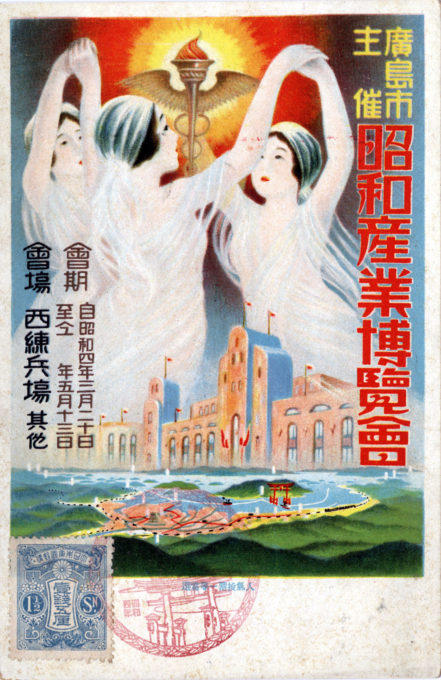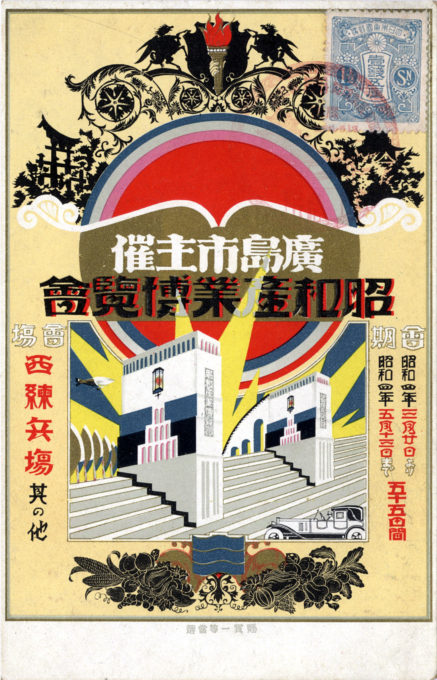“The first ever exposition in Hiroshima [was held] in 1889, celebrating the incorporation of the city.
“… In 1929, the city marked Crown Prince Hirohito’s ascent to the throne with the Showa Industrial Exposition. Significantly, although it was marketed as a national event, the president of the exposition happened to be the former lord of Hiroshima Castle, Asano Nagakoro (1842-1937), whose appointment emphasized local pride and continuity.
“Although there were some military displays, the 1929 expo was for the most part civilian in nature. Hiroshima and other prefectures’ industries occupied most of the ground, and horse and car races, model planes, and a ‘children’s land’ were the main attractions.
“The children’s event displayed a humanoid robot (jimzo ningen), which was capable of speaking through an operator. It was sponsored by the Mainichi newspaper and proved immensely popular.”
– “Hiroshima Castle and the Long Shadow of Militarism in Postwar Japan”, by Ran Zwigenberg, Japan Review (Special Issue), Number 33, 2019
- “Showa Era Industry Exposition held by Hiroshima City”, 1929.
- “Showa Era Industry Exposition held by Hiroshima City”, 1929.
See also:
Meiji (Tokyo) Industrial Exhibition, Ueno Park, 1907.
Peace Commemorative Exposition, Ueno Park, Tokyo, 1922.
Japan Electrical Exhibition, Ueno Park, Tokyo, 1918.
In 1929, Hiroshima hosted the Showa Industrial Exposition. It ran for 55 days, from March 20 through May 13, at three venues in the city, drawing an estimated 1-3/4 million visitors.
The Western Drill Ground (Venue 1) in the north of the city, was the main exposition grounds, with a main hall showing exhibits related to various national and regional industries. Themed territorial pavilions were also sited there, including pavilions for Hokkaido, Formosa (Taiwan), Chosen (Korea), Karafuto Sanko (Sakhalin), and Manmo (Manchuria-Mongolia).
Amusement rides at the exposition included the “Airplane Tower” and the “Circling Wave”, installed at Kodomo no Kuni (lit. “Children’s Land”) laid out to the west of Venue 1. The airplane ride comprised “four model airplanes, each capable of carrying six people, suspended from a 5-jo (25-feet) high steel tower, powered to not only rotate but also ascend and descend.”
The gigantic rotating ride “Circling Wave”, measuring 15 shaku (~5 sq. ft.) in diameter, with a seating capacity of 70, was also popular, according to a contemporary record.



